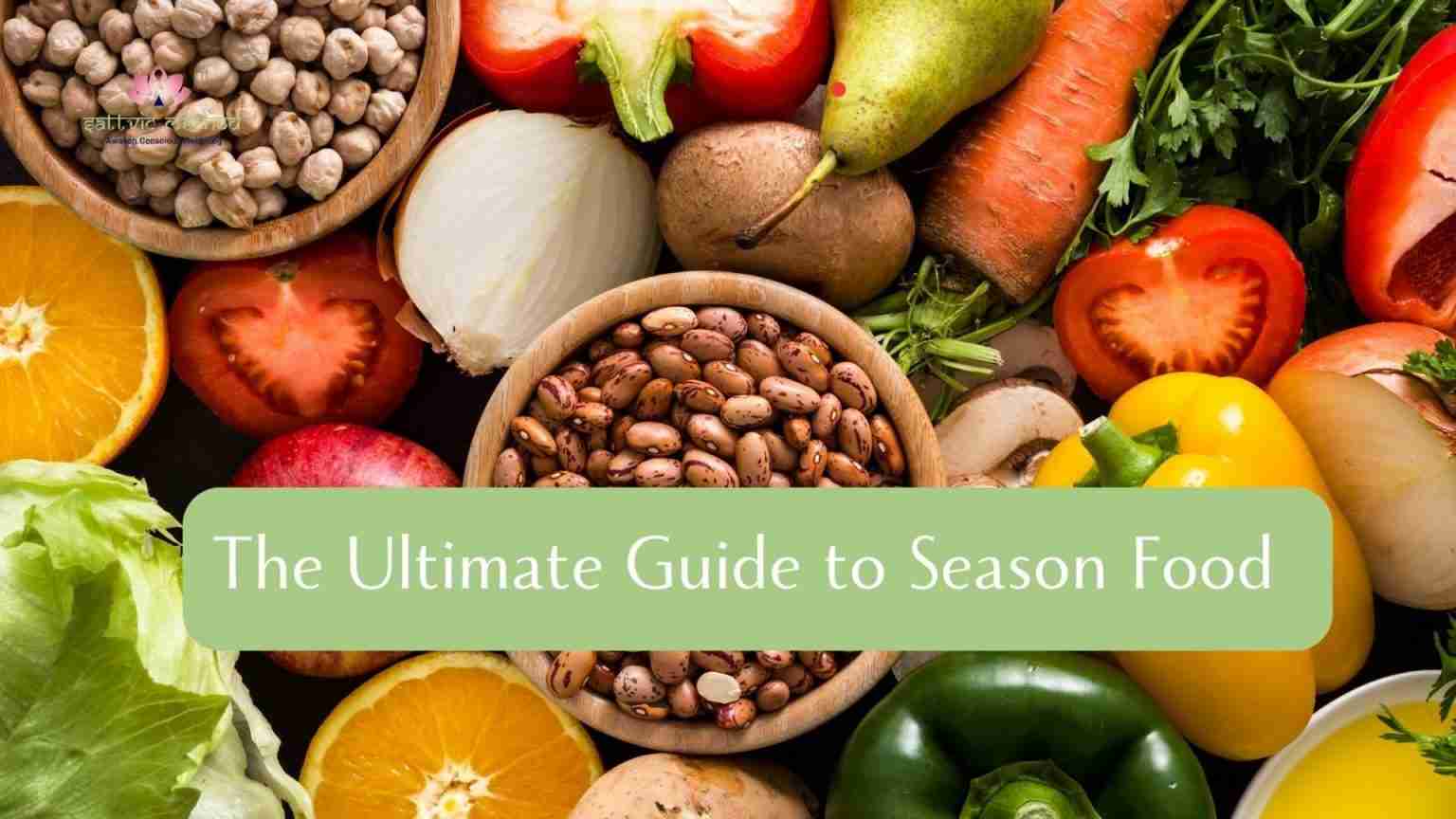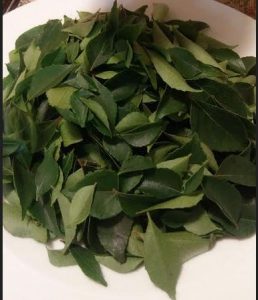Eating seasonally is one of the best ways to enhance the flavors of your food while maximizing its nutritional benefits. In this comprehensive guide, we will take you on a journey through the seasons and show you how to make the most of the produce available each time of the year. From vibrant summer berries to hearty winter root vegetables, we will explore the wide array of seasonal ingredients and offer creative ways to incorporate them into your meals.
By eating seasonally, you not only support local farmers and reduce the carbon footprint of your food, but you also get to enjoy the natural peak of flavors that each fruit and vegetable has to offer. Discover how to tantalize your taste buds with sweet and juicy summer fruits, earthy fall squashes, and crisp winter greens. We will also dive into the nutritional benefits of seasonal eating, highlighting the vitamins, minerals, and antioxidants that are abundant in produce when they are in season.
Whether you are a seasoned home cook or just starting your culinary journey, this ultimate guide is packed with tips, recipes, and practical advice to help you make the most out of seasonal eating. Get ready to savor the flavors of each season and nourish your body with the freshest and most nutritious ingredients available.
Benefits of eating seasonally
Eating seasonally presents numerous advantages that extend beyond merely enjoying fresher flavors. First and foremost, seasonal produce is often harvested at its peak ripeness, which means it is more flavorful and nutrient-dense. Fruits and vegetables grown and picked in their natural growing season are allowed to fully develop their taste profiles and nutritional components. This not only enhances the culinary experience but also ensures that you are consuming foods rich in vitamins, minerals, and antioxidants, which can contribute to overall health.
Furthermore, by choosing seasonal ingredients, you are supporting local farmers and sustainable agricultural practices. When you purchase food that is in season, you reduce the need for long-distance transportation, which can significantly lower your carbon footprint. Local produce typically requires fewer resources to grow and transport, making it a more eco-friendly choice. This connection between seasonal eating and local agriculture also fosters community support, encouraging Benefits of Eating Seasonally
Eating seasonally offers a myriad of benefits that extend beyond just flavor enhancement. One of the most compelling advantages is the peak freshness of seasonal produce. When fruits and vegetables are harvested at their natural peak, they are not only more flavorful but also richer in nutrients. Freshly picked produce contains higher levels of vitamins, minerals, and antioxidants compared to items that have been stored for long periods or transported from distant locations. This means that by choosing seasonal foods, you are likely to nourish your body more effectively with each meal you enjoy.
Moreover, seasonal eating encourages a deeper connection to the environment and local agricultural practices. Supporting local farmers by purchasing their seasonal harvest fosters a sustainable food system and helps preserve regional biodiversity. It also contributes to the local economy, ensuring that farmers can continue to grow and offer their produce. This symbiotic relationship between consumers and producers enhances community ties and promotes a healthier planet. By understanding what’s in season, you become more attuned to the natural cycles of growth and harvest in your region.
Finally, seasonal eating can lead to a more varied and exciting diet. Each season brings a unique array of produce, allowing you to explore different flavors and culinary techniques throughout the year. This variety not only keeps your meals interesting but also ensures that you are diversifying your nutrient intake. By embracing the rhythm of the seasons, you can create dishes that celebrate what’s currently available, leading to a more mindful and enjoyable eating experience.
Flavors and Nutrition in Seasonal Produce
The flavors inherent in seasonal produce are often more pronounced and vibrant than those found in out-of-season alternatives. This distinction can be attributed to the way fruits and vegetables develop their taste profiles during their natural growing periods. For example, summer tomatoes are known for their sweet, juicy flavor, which is achieved through ample sunlight and warm temperatures. In contrast, tomatoes grown in greenhouses or shipped long distances may lack this depth of flavor. By prioritizing seasonal selections, you can experience the true essence of each ingredient, elevating your culinary creations.
In addition to flavor, the nutritional value of seasonal produce is significantly enhanced during its peak season. Fruits and vegetables are rich in essential vitamins and minerals that vary throughout the year. For instance, spring greens such as spinach and arugula are packed with vitamins A, C, and K, while autumn squashes like butternut and acorn are excellent sources of beta-carotene and fiber. Consuming produce at its peak not only satisfies your taste buds but also ensures that you receive a full spectrum of nutrients to support your overall health.
Understanding the nutritional benefits of seasonal produce can inspire you to experiment with new recipes and cooking methods. The unique characteristics of each season provide an opportunity to tailor your meals for enhanced taste and health. For example, winter root vegetables like carrots and parsnips can be roasted to bring out their natural sweetness, while summer berries can be blended into smoothies for a refreshing burst of flavor. Embracing the seasonal variety enriches your diet and encourages creativity in the kitchen.
Spring Season Produce and How to Incorporate It into Your Meals
Spring heralds the arrival of a vibrant array of produce that signals a refreshing change after the winter months. As the days grow longer and warmer, vegetables such as asparagus, peas, radishes, and spinach emerge, bringing a burst of color and flavor to our plates. Asparagus, with its tender stalks, is particularly versatile and can be grilled, roasted, or steamed. Simply drizzling it with olive oil and sprinkling with salt can create a delightful side dish that complements a variety of main courses.
Another delightful spring vegetable is the pea, which can be enjoyed fresh or incorporated into salads and pastas. Sweet and crisp, fresh peas can be eaten raw, adding a pleasant crunch to dishes. Alternatively, you can blend them into a creamy pea soup or toss them into a stir-fry for added texture. The arrival of spring also means an abundance of leafy greens, such as spinach and arugula, which can be used in salads or sautéed as a nutritious side. Pairing these greens with seasonal herbs like mint or chives can further enhance their flavors, creating a fresh and lively meal.
Spring is also the time for a bounty of fruits, including strawberries and rhubarb. Strawberries are not only delicious on their own but can also be used in desserts, smoothies, or as a topping for yogurt. Rhubarb, with its tart flavor, pairs beautifully with strawberries in pies or compotes, adding a unique twist to traditional recipes. Incorporating these seasonal fruits into your meals not only boosts flavor but also provides essential vitamins and antioxidants, making your springtime dishes both satisfying and nutritious.
Summer Season Produce and How to Enhance Their Flavors
Summer brings with it a cornucopia of vibrant produce that is often characterized by sweetness and juiciness. The long, sunny days foster an environment for fruits and vegetables to reach their peak flavor potential. Juicy tomatoes, sweet corn, colorful bell peppers, and an assortment of berries are just a few examples of the seasonal delights available during this time. To enhance their natural flavors, consider using simple cooking techniques that emphasize freshness.
One of the best ways to showcase summer produce is through grilling. Grilling vegetables like zucchini, eggplant, and bell peppers caramelizes their natural sugars, intensifying their flavors while adding a delightful smokiness. You can create delicious skewers with cherry tomatoes and bell peppers, brushed with a mixture of olive oil, garlic, and herbs. This method not only enhances the taste but also makes for a visually appealing dish that is perfect for summer gatherings.
Another fantastic way to enjoy summer produce is in fresh salads. Combining ingredients like ripe peaches, tomatoes, and fresh basil creates a refreshing caprese salad that captures the essence of summer. Adding a drizzle of balsamic glaze or a sprinkle of feta cheese can elevate the dish, making it a perfect accompaniment to grilled meats or as a light main course. With the abundance of berries, consider adding them to salads or desserts for a burst of sweetness. Mixed berry salads topped with a light yogurt dressing can be a delicious and nutritious option for hot summer days.
Fall Season Produce: Exploring the Rich Tastes and Nutrition
As summer transitions into fall, the landscape of produce changes dramatically, bringing forth a rich palette of flavors and textures. Autumn is characterized by hearty vegetables such as pumpkins, squash, and root vegetables like carrots and sweet potatoes. These ingredients not only provide comfort during the cooler months but are also packed with nutrients that are essential for maintaining energy and well-being as the season shifts.
Pumpkins are a quintessential fall ingredient that can be enjoyed in various forms. From soups to pies, the versatility of pumpkin is unmatched. Roasting pumpkin cubes enhances their natural sweetness, making them a delicious addition to salads or grain bowls. Furthermore, pureed pumpkin can be incorporated into baked goods, providing moisture and a nutritional boost. Pairing pumpkin with spices such as cinnamon, nutmeg, and ginger creates warm and aromatic flavors that are perfect for fall.
Another fall favorite is the array of root vegetables, including beets, parsnips, and sweet potatoes. These vegetables can be roasted, mashed, or incorporated into hearty stews. Roasting root vegetables brings out their natural sweetness while providing a beautiful caramelized exterior. A simple toss with olive oil, salt, and your favorite herbs can transform these humble ingredients into a comforting side dish that complements any fall meal. Additionally, the vibrant colors of fall produce not only make your dishes visually appealing but also indicate a wealth of antioxidants and vitamins, making them a nutritious choice.
Winter Season Produce: Maximizing Flavors and Nutrition During Colder Months
When winter descends, the selection of produce may appear limited, but it offers a unique array of options that can be incredibly flavorful and nutritious. Winter is the season for hardy vegetables such as kale, Brussels sprouts, cabbage, and root vegetables, which thrive in cooler temperatures. These ingredients are not only resilient but also develop a depth of flavor that can be harnessed in various dishes.
Kale is a winter superstar, known for its nutritional benefits and versatility. It can be used in salads, smoothies, or as a cooked side dish. To enhance its flavors, consider massaging kale with olive oil and lemon juice, which helps to soften the leaves and reduce bitterness. This technique also allows you to create a vibrant salad base that can be topped with seasonal fruits like oranges or pomegranates for a delightful contrast.
Brussels sprouts, often overlooked, can be transformed into a culinary delight when roasted. Drizzling them with balsamic vinegar or maple syrup before roasting can create a caramelized and sweet flavor profile that is irresistible. Pairing Brussels sprouts with nuts or dried fruits can add texture and richness to your dishes. Additionally, root vegetables like carrots and turnips can be incorporated into hearty soups or stews, providing warmth and nourishment during the cold winter months.
Seasonal Cooking Techniques and Recipes for Each Season
To fully embrace the flavors and benefits of seasonal produce, it’s essential to adopt cooking techniques that highlight their unique qualities. Each season calls for different methods that can elevate your meals and make the most of what nature has to offer. For spring, consider steaming or lightly sautéing vegetables to preserve their vibrant colors and nutrients. A simple spring vegetable medley featuring asparagus, peas, and radishes can be prepared with minimal seasoning to let the natural flavors shine.
In the summer, grilling is a fantastic way to enhance the flavors of fresh produce. A summer vegetable grill platter featuring zucchini, corn, and bell peppers can be drizzled with a zesty marinade and served as a side dish or as a main course. For dessert, consider a mixed berry tart that showcases the sweetness of summer fruits combined with a buttery crust. The fresh berries can be lightly sweetened and topped with whipped cream or yogurt for a refreshing treat.
As the temperatures drop in autumn, roasting becomes a go-to cooking technique. Roasted butternut squash soup, infused with warm spices, can be a hearty and comforting dish that highlights the season’s flavors. For winter, slow cooking is ideal for making stews and casseroles that bring out the richness of root vegetables and greens. A winter stew featuring kale, potatoes, and carrots can be simmered with herbs and spices to create a nourishing and satisfying meal.
Tips for Shopping and Meal Planning Based on Seasonal Availability
Shopping seasonally requires a little planning and awareness, but it can transform your culinary experience. To begin, familiarize yourself with the seasonal produce available in your region. Local farmers’ markets are an excellent resource for finding fresh, in-season ingredients. Visiting these markets not only supports local agriculture but also allows you to discover new varieties of fruits and vegetables that you might not find in grocery stores.
Another effective strategy is to create a seasonal meal plan that incorporates the produce you’ve sourced. By planning your meals around seasonal ingredients, you can create diverse and exciting menus that celebrate the flavors of each season. For example, a spring meal plan might include asparagus risotto, a summer tomato salad, a fall pumpkin curry, and a winter root vegetable hash. This approach not only simplifies grocery shopping but also ensures that you’re making the most of what’s available at any given time.
When shopping, consider buying in bulk for items that are in season and can be preserved. For instance, summer fruits can be frozen for later use in smoothies or baked goods, while fall squashes can be stored for several months. This practice allows you to enjoy seasonal flavors year-round and reduces food waste. By being mindful of seasonal availability, you can make informed choices that benefit your health, support local farmers, and enrich your culinary repertoire.
Embracing the Seasonal Food Journey for Better Taste and Health
Embracing seasonal eating is more than just a culinary trend; it’s a lifestyle choice that nurtures both your palate and your health. By prioritizing ingredients that are in season, you not only enhance the flavors of your meals but also ensure that you are consuming the most nutrient-dense options available. This approach fosters a deeper connection to the food you eat and the environment from which it comes, creating a more sustainable and mindful way of living.
As you navigate through the seasons, remember to explore the diverse array of produce that each time of year has to offer. From the bright greens of spring to the hearty root vegetables of winter, each season presents an opportunity to experiment with new flavors and cooking techniques. By incorporating these seasonal ingredients into your meals, you can enjoy a varied and exciting diet that supports your overall well-being.
Ultimately, the journey of seasonal eating is about more than just food; it’s about cultivating a lifestyle that celebrates the rhythms of nature and promotes health and happiness. As you embrace this journey, you’ll find joy in discovering new recipes, supporting local farmers, and savoring the peak flavors of each season. So, start today by visiting your local market and selecting seasonal produce, and let your culinary adventure unfold throughout the year.
Sattvic Method Company offers many cookbooks with seasonal flavors. Buy them now!







